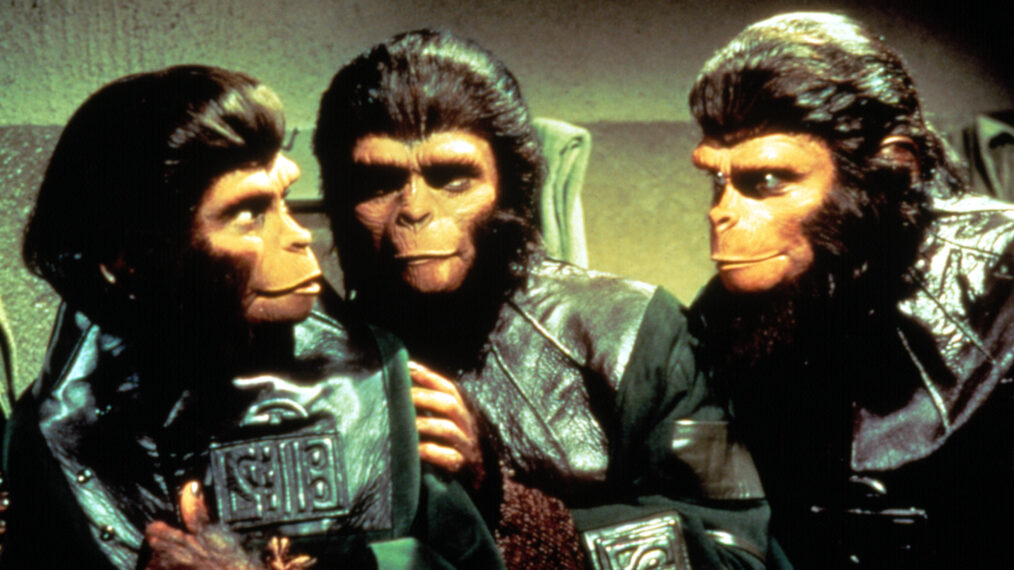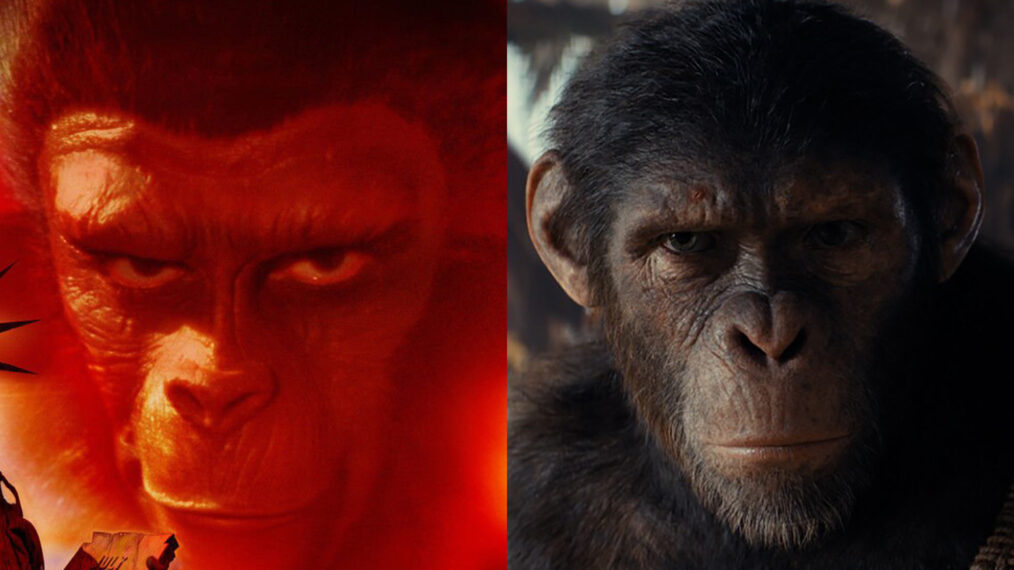9 Things You Didn’t Know About the Original ‘Planet of the Apes’
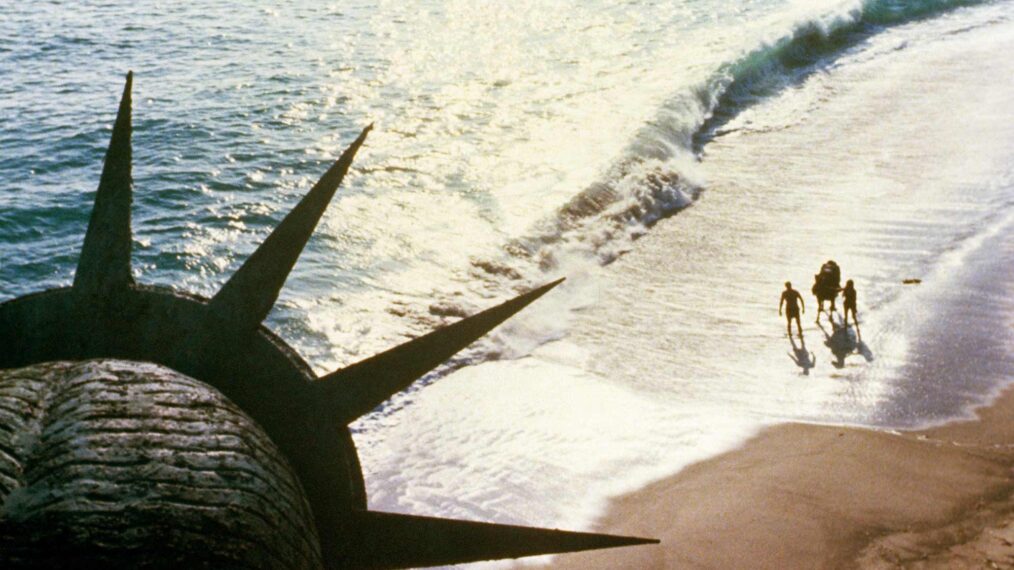
Planet of the Apes was a groundbreaking movie when it was released in 1968, and it continues to enthrall new generations of fans as the latest iteration, Kingdom of the Planet of the Apes comes to screens.
In an age when computer graphics take the place of elaborate ape masks and costumes, and CGI can create entire cities that were once built with iron rods and polyurethane foam, it makes today’s moviegoer appreciate just how much effort went into that original 1968 production.
We unearthed a few amazing, little-known facts about the movie that started a sci-fi adventure still going strong 56 years later.
1Edward G. Robinson was the original Dr. Zaius
Charlton Heston’s The Ten Commandments costar Edward G. Robinson was originally considered to play the role of orangutan Dr. Zaius. Robinson even filmed a scene for a makeup and conceptual test:
Producer Arthur P. Jacobs felt that Robinson was too expensive for a role that could be filled instead by a “good English actor” at a third of the cost to hire Robinson. There were issues with Robinson’s health — he had a heart problems — and the physical challenges the makeup and appliances would cause him, not to mention the extreme heat of the climate they were shooting in. Also, Robinson refused to shave his beard. Eventually, Robinson and Jacobs came to an agreement. Robinson was paid $50,000 for his troubles and Shakespearean actor Maurice Evans was signed to play Zaius.
2Linda Harrison wasn’t just Richard Zanuck’s girlfriend
Linda Harrison was a former Miss Maryland with ambitions of being on the screen. She was noticed by a Fox talent scout and signed to a short studio deal. She was soon introduced to Fox head of production Richard D. Zanuck, who was instantly smitten. You can see why.
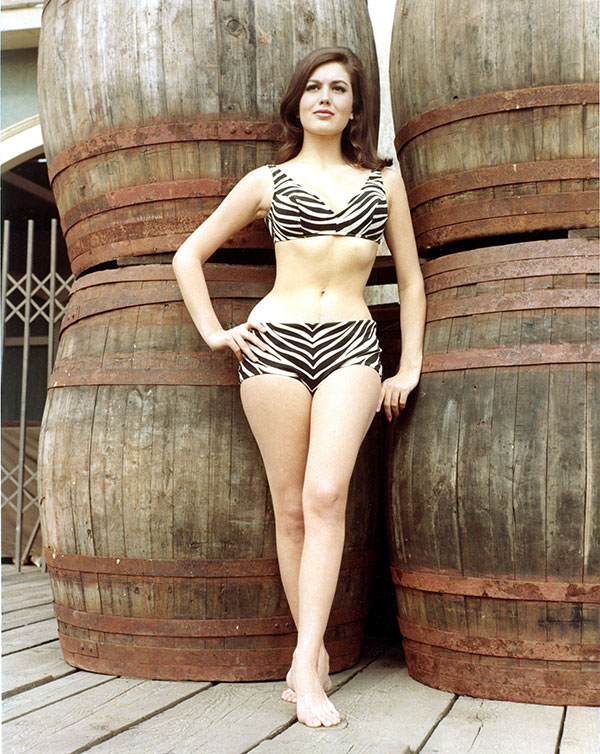
©20th Century Fox Film Corp./Courtesy Everett Collection
A romantic relationship between a studio head and an actress (especially an inexperienced one) has expected complications. Zanuck signed Harrison to an extended deal with Fox and put her through a talent school. Harrison appeared as Dr. Zira in the makeup test scene (see No. 1, above). When Apes was being cast, Zanuck wanted Harrison to play Nova. “Dick suggested me, but he did it very nicely,” Harrison said. She went through the audition process and got the part. One might have expected Harrison to be a diva or receive special treatment given her relationship to Zanuck, but her costars said she was a joy to work with, was always on time and was a total professional. Zanuck and Harrison were married in 1969. They had two children and divorced in 1978.
3Taylor originally died and Nova was pregnant

©20th Century Fox Film Corp./Courtesy Everett Collection
In the first scripts by Rod Serling, Heston’s Taylor character was known as Thomas, and he was supposed to die after discovering the Statue of Liberty. Meanwhile, Nova, pregnant with Thomas’ child, would escape and go on to presumably give birth to a new generation of civilized human. New screenwriter Michael Wilson didn’t like this idea and strongly urged against it. Scenes with Nova suffering from morning sickness were shot, but the length of the film caused the entire pregnancy storyline to be cut. There were also concerns that the idea of Taylor mating with a “subhuman” would be objectionable, but the real problem for producers was that the pregnancy introduced an element that threatened to veer the story into an entirely different direction.
4See no evil, hear no evil, speak no evil
In the scene with Taylor subjected to an ape tribunal, director Franklin Schaffner thought it would be a fun joke to have the three orangutan judges mimic the “see no evil, hear no evil, speak no evil” from the ancient Asian proverb during a rehearsal. Heston suggested to Schaffner that they go ahead and shoot it, just something for the dailies and not intended to make the final cut of the film. Both Heston and Schaffner were both shocked and disappointed that the gag had actually made it through all rounds of editing and into the final movie.
5The cast barely recognized each other … or themselves

©20th Century Fox Film Corp./Courtesy Everett Collection
When makeup artists first fully applied the ape mask effects to Kim Hunter, who played chimp Dr. Zira, she broke out into tears because she was terrified that she had “lost” herself. Roddy McDowall woke up in the makeup chair, looked in the mirror, and went berserk. At mealtimes, the chimps, orangutans and gorillas tended to eat with their own species, just to provide themselves with some sense of familiarity. Heston recalled that he ran into Hunter at the movie’s premiere in New York City and didn’t recognize her, even though he’d worked with her for three months. “I never saw the actors who played the apes,” Heston recalled. “I did the whole picture without ever laying eyes on any of these people, which is very unusual.”
6An 83-year-old woman played a 2,000-year-old corpse
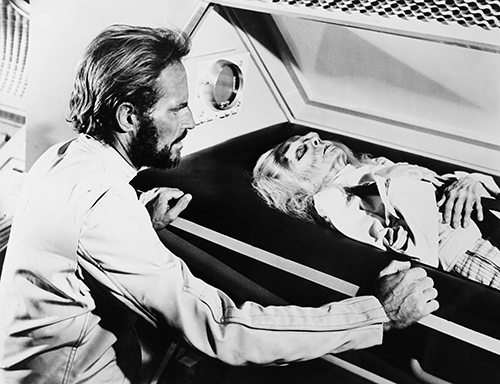
Dianne Stanley played the part of Stewart, the lone female astronaut on the ANSA spacecraft. Her part was simple: Lie asleep in the suspended animation chamber. At some point during the spacecraft’s journey, Stewart’s sleep chamber failed and she died (the plan to populate another planet died with her). Originally, a mannequin was used for Stewart’s long-dead corpse, but makeup designer John Chambers didn’t think it looked dead enough. An 83-year-old woman was cast and made up to play a more desiccated, realistic-looking corpse.
7Apes used recycled sound effects
With limited time and budget, sound designers Herman Lewis and David Dockendorf used many sounds previously recorded and saved in the Fox sound library. The sound of the spacecraft’s engine during the crash landing scene was a jet engine sound that was also used for the Batmobile in the Batman TV series. A high-pitched screeching sound was reused from War of the Worlds (1953), the sound of tumbling boulders came from Journey to the Center of the Earth (1959), gunshot noises came from Jesse James (1939) and the sound of thunder was “Fox trademark thunder” in use since the 1930s.
8The Statue of Liberty was painted by a Fox studio legend
Artist Emil Kosa Jr. designed the iconic 20th Century Fox “searchlight” logo in 1935, and served as the studio’s art director for 35 years. In 1964, he won the Best Visual Effects Oscar for his work on the film Cleopatra. Kosa painted the matte art for the Statue of Liberty in the big Apes final revealing shot, which was superimposed over the cliff at Point Dume State Beach.
9Sammy Davis Jr. owned a Lawgiver statue

©20th Century Fox Film Corp./Courtesy Everett Collection
Sammy Davis Jr. was a huge fan of Apes, and he praised it for its commentary on race relations at a very volatile time in American history. Jacobs was friends with Davis, and gave him one of the two 9-foot statues of the Lawgiver that were used in filming. Jacobs had one of the statues in his backyard, and his widow, Natalie Trundy Jacobs (who appeared in multiple Apes sequels), sold it in an online auction in 1998. That statue was sold again in an auction in 2022. The Lawgiver statue owned by Davis was sold at an IRS estate auction to pay the entertainer’s back taxes after his death. That statue is now owned by Quentin Tarantino.
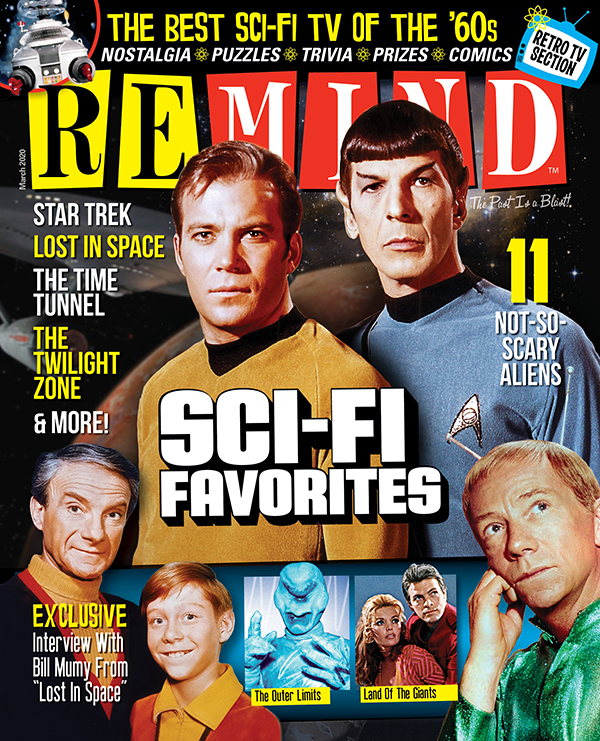
60s Sci-Fi Favorites
March 2020
Do you remember all the great Sci-Fi TV shows of the ’60s?
Buy This Issue
